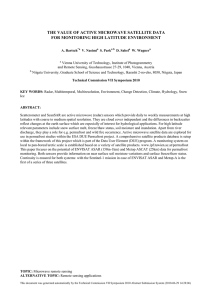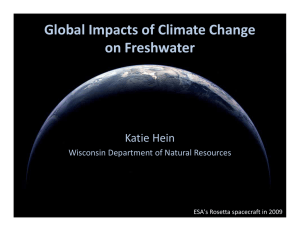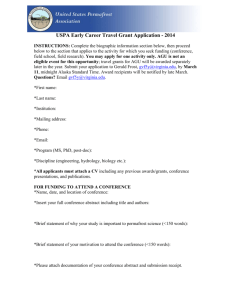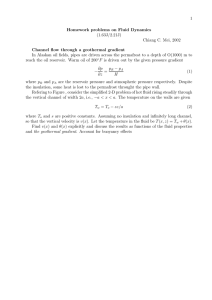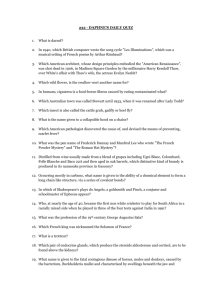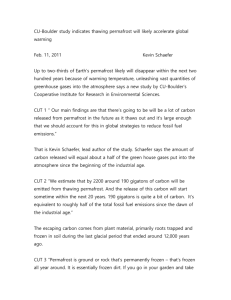Analysis of Thaw Subsidence Impacts on Production Wells Jueren Xie
advertisement
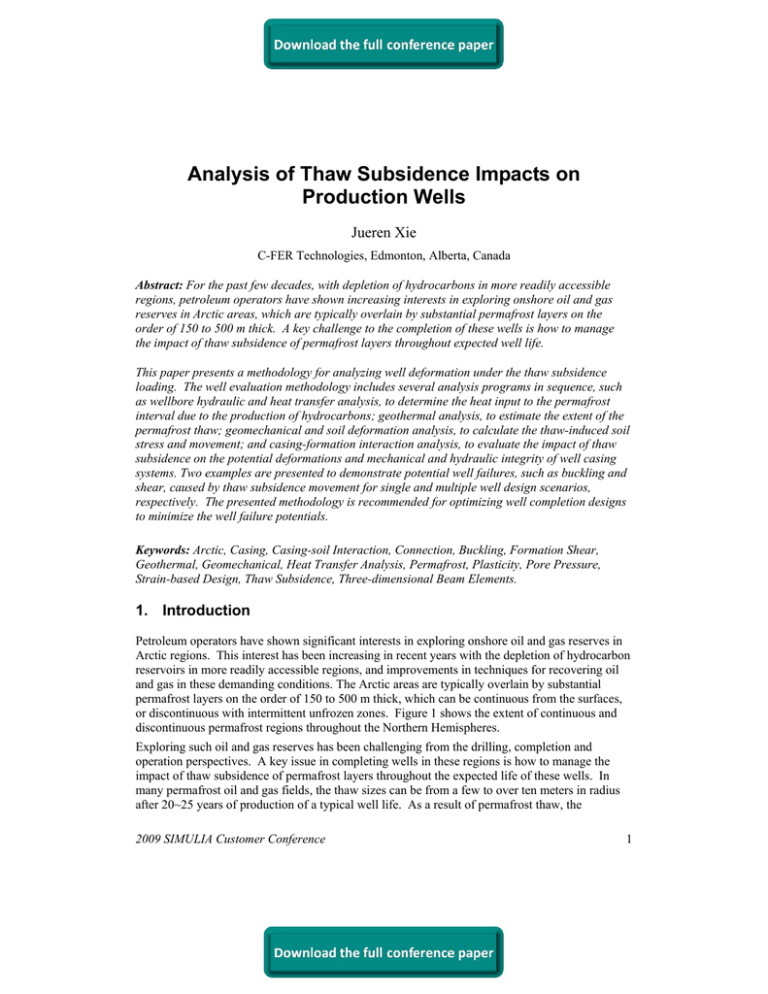
Analysis of Thaw Subsidence Impacts on Production Wells Jueren Xie C-FER Technologies, Edmonton, Alberta, Canada Abstract: For the past few decades, with depletion of hydrocarbons in more readily accessible regions, petroleum operators have shown increasing interests in exploring onshore oil and gas reserves in Arctic areas, which are typically overlain by substantial permafrost layers on the order of 150 to 500 m thick. A key challenge to the completion of these wells is how to manage the impact of thaw subsidence of permafrost layers throughout expected well life. This paper presents a methodology for analyzing well deformation under the thaw subsidence loading. The well evaluation methodology includes several analysis programs in sequence, such as wellbore hydraulic and heat transfer analysis, to determine the heat input to the permafrost interval due to the production of hydrocarbons; geothermal analysis, to estimate the extent of the permafrost thaw; geomechanical and soil deformation analysis, to calculate the thaw-induced soil stress and movement; and casing-formation interaction analysis, to evaluate the impact of thaw subsidence on the potential deformations and mechanical and hydraulic integrity of well casing systems. Two examples are presented to demonstrate potential well failures, such as buckling and shear, caused by thaw subsidence movement for single and multiple well design scenarios, respectively. The presented methodology is recommended for optimizing well completion designs to minimize the well failure potentials. Keywords: Arctic, Casing, Casing-soil Interaction, Connection, Buckling, Formation Shear, Geothermal, Geomechanical, Heat Transfer Analysis, Permafrost, Plasticity, Pore Pressure, Strain-based Design, Thaw Subsidence, Three-dimensional Beam Elements. 1. Introduction Petroleum operators have shown significant interests in exploring onshore oil and gas reserves in Arctic regions. This interest has been increasing in recent years with the depletion of hydrocarbon reservoirs in more readily accessible regions, and improvements in techniques for recovering oil and gas in these demanding conditions. The Arctic areas are typically overlain by substantial permafrost layers on the order of 150 to 500 m thick, which can be continuous from the surfaces, or discontinuous with intermittent unfrozen zones. Figure 1 shows the extent of continuous and discontinuous permafrost regions throughout the Northern Hemispheres. Exploring such oil and gas reserves has been challenging from the drilling, completion and operation perspectives. A key issue in completing wells in these regions is how to manage the impact of thaw subsidence of permafrost layers throughout the expected life of these wells. In many permafrost oil and gas fields, the thaw sizes can be from a few to over ten meters in radius after 20~25 years of production of a typical well life. As a result of permafrost thaw, the 2009 SIMULIA Customer Conference 1
